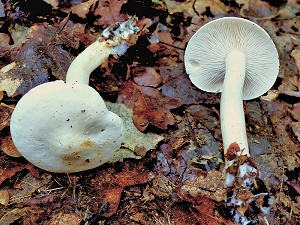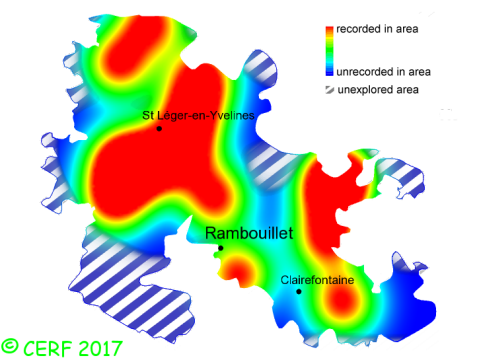| Tricholoma stiparophyllum Fr.& N. Lund. |
|
|
|
|
|
|
The cap is white, sometimes ochre towards centre, convex, then flattened, then eventually depressed at the centre, often with an obtuse umbo; its margin is furrowed (check with varying light incidence), sometimes slightly wavy. The cap surface is smooth, silky. The stem is white, smooth, full, stained with ochre especially towards base, without ring. The flesh is white, unchanging; its taste is bitter then acrid after a while; the odour is strong, unpleasant, earthy or of insecticide; its texture is fibrous. The gills are white to cream or ochre-pink, emarginate to adnate, crowded and regular . The spore print is white. This species is mycorrhizal. It grows on the ground, in broad-leaved or mixed woods, on a rather calcareous or neutral soil, essentially with birch. The fruiting period takes place from September to November.
Chemical tests : flesh turns grey in 1mn upon exposure to sulfovanillin. Distinctive features : white cap and stem, with ochre stains; cap with furrowed margin; gills white to ochre-pink, regular and crowded; bitter taste; strong earthy odour, unpleasant; with birch Tricholoma stiparophyllum is infrequent and widely present in the forest of Rambouillet, and is occasional, more generally speaking . | ||
|
page updated on 14/01/18

